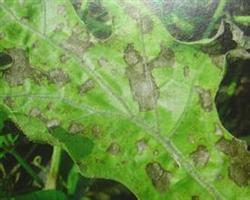Strengthen the field management of watermelon at present

At present, the corresponding field management of watermelon should take the following measures: 1. Open a good drainage and irrigation ditch: if the trench does not meet the requirements before planting, the general ditch, perimeter ditch, middle ditch and border ditch should be opened in time. The depths of the grooves are 1.5 m for the total trench, 1.0 m for the middle ditch, 0.8 m for the middle ditch and 0.4 m for the border ditch. The ditches must be unobstructed to prevent debris such as weeds or silt from blocking the ditches. Only by doing a good job in the drainage and irrigation system of melon orchards can we prevent Rain Water from scouring the garden and melon land and affecting the normal growth of watermelons. At the same time, it will also lead to the occurrence and spread of diseases and insect pests. 2. Strengthen artificial pollination: watermelon is a cross-pollinated insect-pollinated flower, and this period is the season for pollination and fertilization of most watermelons in our county. Therefore, it is difficult to pollinate and fertilize by insect activities in this cloudy, rainy and low temperature weather. In addition, pollen is easily washed out during rainfall, and too much humidity will hinder pollen germination and so on. Therefore, artificial pollination of watermelon is the key to watermelon cultivation and management this year. The method is: before the male flowers bloom, grab hundreds of male flowers and put them on the plate, let them bloom naturally, and so on after the rain, grab sunny or cloudy days for artificial pollination. When pollinating, take a male flower to remove the petals, expose the stamens, gently apply the stamens on the female flower stigma, and cover it with a paper bag to prevent Rain Water from scouring the stigma. The movement should be light and accurate, do not re-touch the stigma. 3. Skillfully applying topdressing: due to continuous low temperature, overcast and rain, the ability of root system to absorb fertilizer is poor, and fertilizer is easy to be lost in the soil. Even if the growth of melon seedlings is still good, it is necessary to add some chemical fertilizer or top dressing outside the root when the rain stops and clears up. The amount of fertilizer is not easy to be too much this time, so as not to cause excessive growth. Specific depends on the land, seedlings and other conditions and appropriate fertilization times. 4. Pruning and tending: this period is originally the season of pruning, but due to continuous overcast and rainy weather. For this reason, pruning or tending should be postponed until the weather clears up. The weather was fine for 2-3 days after rain, and the vines were rationally trimmed according to the variety and planting density. Generally speaking, our county chooses double vines and three vines to trim vines. In addition, the vine should not only choose a sunny day, but also should be carried out in the afternoon on a sunny day, so that it is not easy to break the vine. When drawing the vine, gently squeeze the leaves with your fingers, and do not grasp the stem to prevent the hairs on the vine from getting hurt. 5. Pay attention to pest control: due to the weather, the occurrence and trend of diseases and insect pests should be observed in the field in time. Diseases in this period, such as anthrax, blight and Fusarium wilt, are easy to occur, develop and even break out. Therefore, melon farmers must be asked to detect and control them in time. Otherwise, the consequences are hard to predict. In the normal management of this period, after every rain, no matter it is sunny or cloudy, it should be sprayed with high efficiency, low toxicity and broad-spectrum pest control pesticides to prevent the occurrence and outbreak of many diseases.
- Prev

Simple control techniques of watermelon diseases
Before sowing, select the greenhouse that has not planted melon crops, or use the shed with high temperature in summer leisure period, in order to prevent the invasion of soil-borne diseases such as Fusarium wilt, sudden collapse, blight and anthracnose at seedling stage. The seeds were soaked in 55 ℃ warm water for 10 minutes, stirred continuously, cooled and soaked for 6 hours, then.
- Next

Three elements of watermelon flower and fruit protection in high temperature and rainy season
The hot and rainy season is a test for most crops, and watermelon is no exception. In this weather, what we mainly do is how to protect flowers and fruits and improve fruit setting rate and watermelon yield. Mainly from three aspects of protection: factor 1, cultivation and management in the greenhouse 1, high temperature in summer.
Related
- Moge, come on! The staff of the peasant association in the producing area of cantaloupe were frightened when the crowd gathered.
- Causes and Solutions of low Fruit setting rate of Apple
- Symptoms and control measures of passion fruit virus disease
- Fruit growing lesson: how do apple orchards keep high yields?
- Can you build orchards in the mountains? What are the pros and cons?
- How to manage the coloring period of Crisson grape?
- This paper introduces the processing technology of two kinds of fig products.
- How much is a month for retired teachers in rural areas by 2020?
- How can strawberry planting increase sugar content? We should pay attention to management in many aspects.
- What are the cultivation techniques on how to improve the yield of golden fruit?

